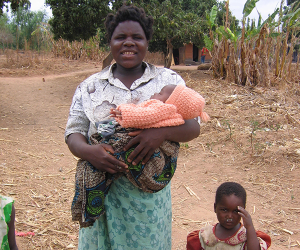The vision will help you frame the communication strategy by stating what the program hopes to achieve. It is what the “world” looks like when the project or program is complete. The stakeholders involved in the strategy design process should agree on the vision so that they all share the same one.
The true vision should be realistic, concrete, and inspiring. It should provide direction, communicate enthusiasm, and foster commitment and dedication. Some organizations call the vision the “Goal” or the “Primary Objective.”
All other steps in the process should reflect and draw on the vision for guidance and inspiration.
Illustrative Example of a Vision Statement
Early and exclusive breastfeeding for the first six months is the norm in our communities. Women and families provide the right foods at the right time. Breastfeeding mothers eat at least two extra, nutritious meals a day. And more and more mothers practice active breastfeeding for at least two years. Families, service providers, congregations, businesses, faith-based texts and sermons and government and industry polices support these actions.
Importantly, the examples we provide are intended to demonstrate a wide range of possibilities that could be used. Individual programs need to decide what works best within their country context based on their situation or audience analysis, and budget and resource constraints.


